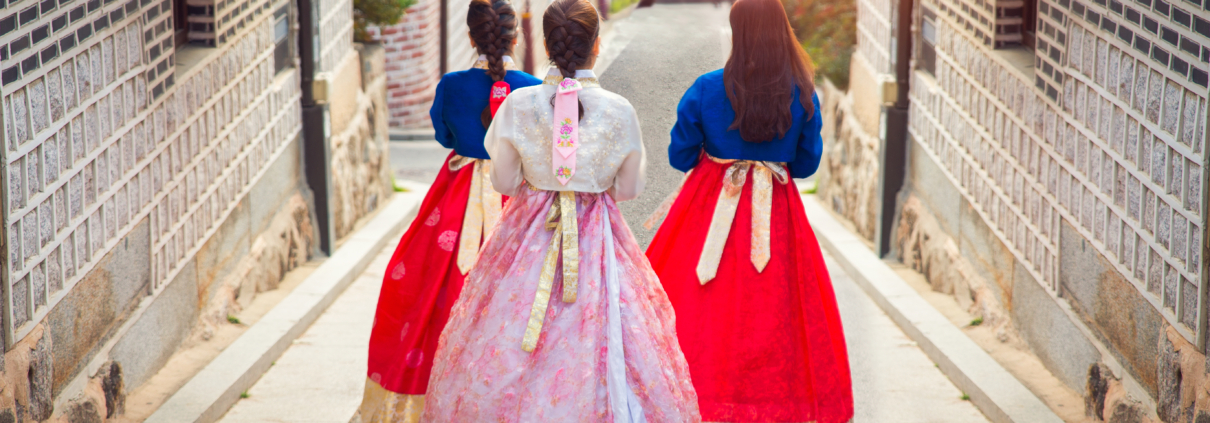Chuseok: Korea’s Harvest Moon Festival — A Celebration of Family, Gratitude & Tradition
Autumn lights up the Korean calendar with one of its most beloved holidays: Chuseok (추석). Sometimes called Korean Thanksgiving, Chuseok is a time for family reunions, honoring ancestors, and celebrating the year’s harvest under the full moon. It’s deeply rooted in tradition, yet alive in contemporary practice across Korea and in Korean communities around the world.
In this post, we’ll explore:
- What Chuseok is and when it’s celebrated
- Its historical and cultural roots
- Traditional customs & foods
- Modern forms of celebration
- How families and children can engage
- Cross-cultural and global relevance
- What & When
Chuseok, also known as Hangawi (한가위), falls on the 15th day of the 8th month of the lunar calendar, when the moon is fullest and brightest. Because of its lunar basis, Chuseok’s date shifts each year in the Gregorian calendar (usually in September or early October). https://www.90daykorean.com/chuseok-in-korea
It is a three-day public holiday in South Korea, allowing people time to travel to their hometowns, gather with extended family, and observe traditional rituals.
Chuseok is often likened to a “Korean Thanksgiving” because of its emphasis on giving thanks for a bountiful harvest and reconnecting with ancestors.
- History & Cultural Roots
Chuseok has deep roots in Korea’s agrarian past. It is tied to harvest cycles, moon worship, and ancestral veneration. https://asiasociety.org/korea/chuseok-korean-thanksgiving-day
One popular origin legend comes from the Silla Kingdom (which ruled from ca. 57 BC to 935 AD). According to tradition, there was a weaving contest held every autumn (called gabae). The team that wove more cloth wins, and the losing side treats the winners to a feast — a kind of communal thanksgiving. Over time, this evolved into the harvest festival we now call Chuseok.
- Traditional Customs & Rituals
Chuseok’s beauty lies in its rituals — each step carries meaning.
Charye (차례) — Ancestral Memorial Rites
On the morning of Chuseok, families perform charye, a memorial ceremony honoring deceased ancestors. Families prepare a ceremonial table, laden with the year’s harvest produce, rice, fruits, and freshly made dishes. Participants bow in respect, and requests for blessings or continued protection are made.
Seongmyo & Beolcho — Tomb Visits & Grave Maintenance
Before or during Chuseok, families visit ancestral graves (seongmyo, 성묘) to pay respects. They tidy the grave site, remove weeds, and offer food, a practice called beolcho (벌초). This act of care reinforces kinship and continuity across generations.
Food, Feasts & Songpyeon
Food is central. One of the most iconic Chuseok foods is songpyeon (송편), half-moon shaped rice cakes filled with sesame seeds, red beans, mung beans, or chestnuts. Songpyeon is steamed over pine needles, which imbue aroma and prevent sticking. The shape is symbolic: originally, Koreans believed that the half-moon form is auspicious and promotes growth (because a full moon might “wane”). Other foods typically include jeon (jeonyo, savory pancakes of meat, fish, vegetables), freshly harvested rice, fruit, and toran-guk (a taro soup).
Folk Games, Dance & Performance
Festivities often include traditional folk games, music, and performances. One famous dance is Ganggangsullae, a circle dance performed by women under the full moon — it’s associated with Chuseok and was even used historically to signal strength or unity.
Other entertainment may include ssireum (Korean wrestling), tug-of-war, folk music, and communal games.
On the Chuseok eve, families may gather to make songpyeon together — not just for convenience, but as a bonding ritual.
- Modern Practices & Adaptations
Times have changed, but the spirit of Chuseok lives on — especially in how people balance tradition and modern life.
Urban Migration & Travel
Many Koreans live in large cities far from ancestral homes. During Chuseok, there is massive travel (often called “Chuseok exodus”) as people return to hometowns to celebrate with family.
Some traditions adapt: for people abroad, families might perform memorial rites in local Korean churches or community centers.
Living Traditions & New Customs
While many still observe ancestral rites and make songpyeon, newer traditions are gaining popularity: karaoke gatherings, watching Korean dramas, social media sharing, and contemporary performances.
In some parts, urban communities hold cultural events, exhibitions, or moon-viewing parties open to the public.
Commercial & Gift Trends
Just like other holidays, gift-giving is more widespread now. Premium gift boxes (fruit, meat sets, health goods) are sold in department stores for Chuseok.
Some households purchase ready-made songpyeon or other holiday foods due to busy schedules, though many still prefer homemade versions for authenticity.
- Engaging Families & Children: Ideas & Lessons
If your audience includes families and kids, here are ways to make Chuseok meaningful and fun:
🍽️ Cooking & Baking Together
- Make songpyeon as a family project. Kids can help fill and shape the rice cakes.
- Try simple jeon (vegetable pancakes) or seasonal fruit dishes.
- Teach the meaning behind ingredients, shapes, and rituals (e.g. pine needles, half-moon shape).
🌙 Moon Viewing & Stories
- On the Chuseok night, spend time outside viewing the full moon.
- Share stories or legends — for example, tales about the moon rabbit or folklore connected to the moon.
- Compare how the full moon is celebrated in other cultures (e.g. Mid-Autumn Festival in China, Tsukimi in Japan).
🎨 Crafts & Traditions
- Create simple paper lanterns or moon-and-star decorations.
- Design your own “harvest gratitude card,” where each family member lists things they’re thankful for.
- Teach a simple Korean folk dance or circle dance inspired by Ganggangsullae.
📚 Cultural Learning
- Read age-appropriate books or articles about Chuseok, Korean culture, or harvest traditions.
- Compare Chuseok to other harvest or thanksgiving festivals around the world.
- Encourage kids to learn relevant Korean words: e.g. “송편 (songpyeon), 추석 (Chuseok), 한가위 (Hangawi).”
🎉 Virtual or Community Celebrations
- If you are in a multicultural community or language program (like Language Kids World), host a mini Chuseok event: share food, teach parts of ritual, do a short performance.
- Invite Korean guest speakers or community members to share personal stories.
- Global & Cross-Cultural Relevance
Chuseok offers many opportunities for cross-cultural education and connection:
- Harvest festivals are universal — many cultures have celebrations for harvest, seasons, and gratitude (e.g. Thanksgiving, Mid-Autumn, Sukkot).
- It teaches ancestral respect & memory, a concept seen in many traditions (Día de los Muertos, Obon in Japan, All Souls’ Day).
- It demonstrates how tradition adapts in modern society: urbanization, migration, and technology don’t erase culture — they evolve it.
- It’s a gateway to language, food, and heritage learning — perfect for cultural education.
In many overseas Korean communities (e.g. in the U.S., Canada, Australia), Chuseok is observed in a community center or church. Families gather for potluck-style feasts, cultural performances, and memorial ceremonies. Some Korean language schools host Chuseok festivals, complete with songs, dance, and food demos.
For example, Korean cultural centers and Korean-American associations often host Chuseok events to help younger generations connect to heritage.
Chuseok isn’t just a festival — it’s a living thread that connects past and present, families near and far, harvest and hope. It reminds us to pause, give thanks, care for our lineage, and celebrate abundance.
For families, Chuseok can be a beautiful opportunity to bring children into traditions, sharing stories, cooking, and meaning across generations. Even small gestures — viewing the moon, making a rice cake, or cleaning a grave (if applicable) — carry powerful symbolism.
If you or your community celebrate Chuseok, I hope this post gives you ideas, context, and ways to make it meaningful. 즐거운 추석 보내세요! (Happy Chuseok!)

Founder and Director of Education at Language Kids.
M. Ed.



Leave a Reply
Want to join the discussion?Feel free to contribute!